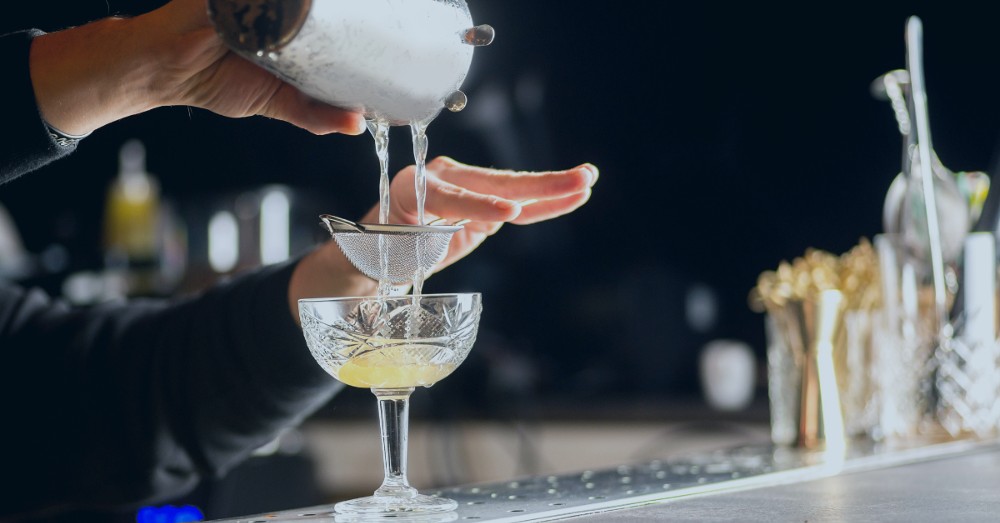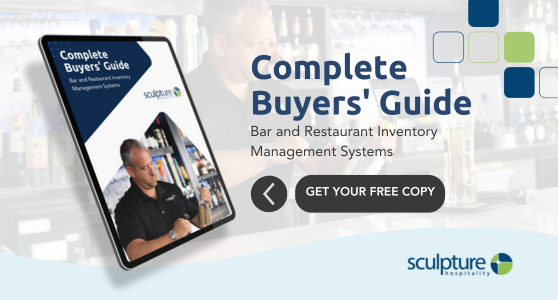When operating a bar, one of your main inventory goals is to ensure you have the perfect amount of stock on hand at any given time. Too much or too little inventory can have a huge impact on your bottom line.
Today, we are going to look at how much inventory your bar should carry. But first, let’s discuss the impacts that over or under stocking can have on your business.
The problem with understocking
The main problem with understocking is that you risk not having a product when a customer orders. This could lead to missed sales, reduce customer satisfaction and poor reviews. It also means you may be missing out on cost efficiencies gained by meeting minimum orders, and puts you at risk of not being able to restock if there is ever a shortage.
The problem with overstocking
When your bar inventory is too high, it means that your turnover is low. Inventory turnover shows how many times your company sells and replaces its bar stock. If that number is too low, it means that you are holding on to inventory for extended periods of time. While this doesn’t sound like an immediate issue, especially when considering the shelf life of alcohol, it can have an impact on your bottom line.
First off, when you overstock, you are tying up capital that could be used for other money making opportunities or investments. In addition, it increases storage costs associated with keeping the inventory on site. For example, more stock on hand means you need a larger storeroom or are taking up space that would be better used for storing other inventory/supplies or even adding more tables. The additional time it takes to count this overstock also increases inventory labour costs.
Finally, if you order a large amount of a specific beverage or mix and that product stops being popular, you may be forced to sell it at a lower price or, even worse, unable to sell it, leading to lost profits. Having deadstock on hand isn’t useful for anyone.
So now that you know why you don’t want to over or understock, it’s time to look at how much liquor inventory your bar should be carrying.
How much inventory should a bar carry?
The ideal amount of inventory you carry will depend on the specific product you are buying. For example, you will want to reorder perishable garnishes more often to ensure freshness, while alcohol can be purchased less frequently to avoid understocking and take advantage of cost efficiencies.
However, there are some general rules of thumb. But before we get to that, you need to know how to calculate inventory turnover, which we talked about earlier.
Inventory Turnover = Cost Of Goods Sold / Average Value Of Inventory On Hand
For example, if you buy $20,000 worth of alcohol a month and have an average of $5,000 on hand throughout the month then your turnover is 4 ($20,000 / $5,000 = 4).
Now that you know how to calculate turnover, let’s see how much inventory you should have of various products.
Garnishes and mixes
For perishable garnishes like fresh citrus, you want to have a turnover of 4 to 6 times a month. That means you should have no more than 5 to 7 days of product on hand with 1 to 2 deliveries a week.
For products with shorter shelf life, like orange juice that must stay refrigerated, you want to be sure you don’t have more than you can use by the expiry date. For example, if your OJ has a shelf life of 2 weeks unopened, you only want to carry enough to get you through 7 to 10 days.
For non-perishable garnishes, such as jarred olives or maraschino cherries, or mixes that have longer shelf life, you can buy more at a time to reduce delivery costs. That being said, you probably don’t want to have more than you can use in 2 to 4 weeks to avoid losses caused by changes in demand.
Liquor
You want a turnover of about 1 time a month, though this will vary per product based on your sales mix.
Beer in cans and bottles
You want a turnover of 2 to 3 times a month. This will be equivalent to having 10 to 15 days’ worth of product on hand and 1 to 2 deliveries every two weeks.
Draft Beer
You want a turnover of 1 to 2 times a month. Again, this will vary based on your sales mix.
Wine
You want a turnover of about 1 time a month, though this will vary based on your sales mix.
To help simplify your ordering process and ensure you aren’t over or understocking, you should consider using inventory management software. It will automatically calculate turnover and provide comprehensive reports on how your business is performing.
Interested in learning more about how a restaurant inventory management system can help? Book a consultation with the Sculpture Hospitality team today.






.png)




.png?width=520&height=294&name=Sculpture%20Blog%20Banner%20Images%20%5B2025%5D%20(2).png)
